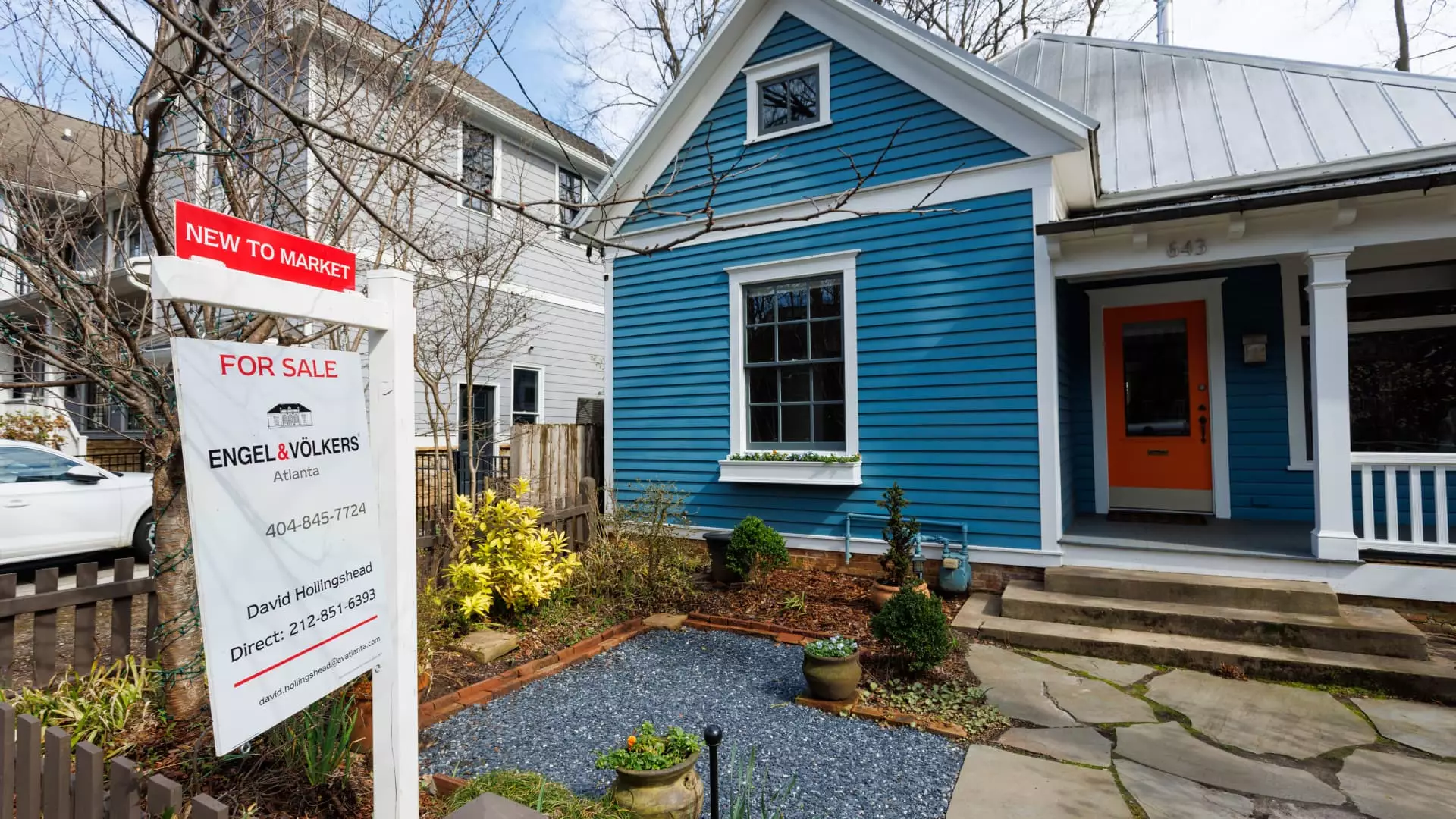February saw a surprising 4.2% increase in the sale of previously owned homes, totaling 4.26 million units on a seasonally adjusted basis, according to the National Association of Realtors. Coming off the heels of earlier forecasts predicting a 3% decline, this spike raises eyebrows. The context here is essential: While on the surface, it sounds like a positive trend, digging deeper reveals a dissonance between market indicators and real consumer sentiment. Notably, these sales figures reflect transactions that were set in motion during a period of high mortgage rates, specifically hovering in the 7% range for 30-year fixed loans. Today’s rates in the high 6% range may have eased the immediate financial pressures for homebuyers, but it does not guarantee consistent upward momentum.
The Tightrope of Market Conditions
Despite the uptick in sales, it’s crucial to note that sales remain 1.2% lower than this time last year, indicating that the market is still trying to find its feet amidst economic uncertainty. Lawrence Yun, NAR’s chief economist, suggests that an influx of inventory signals a slow recovery in pent-up demand, yet one cannot ignore that this newfound “inventory” is merely a reaction to a historically unbalanced market. With current inventory levels rising to 1.24 million units—up 17% year-over-year—one would hope for a more conducive environment for buyers. However, at just a 3.5-month supply, we’re far from the six-month equilibrium deemed balanced.
Price Pressures and Buyer Psychology
Interestingly, high-end sales (over $750,000) appear to be thriving, while the median price of homes sold has hit an eye-popping $398,400—marking a record high for February. This climate breeds an illusion of prosperity, primarily benefiting affluent buyers. With a significant decline in transactions around median price levels, it brings to light a troubling narrative: the widening affordability gap in real estate. The limited market supply continues to maintain upward pressure on prices, thereby marginalizing first-time buyers who are now just starting to reclaim a sliver of the market, representing 31% of sales as opposed to just 26% the previous year. This uptick is misleading as these entrants face an uphill battle.
A Cautionary Tale on Investment Trends
Moreover, investor participation in the market is waning, comprising only 16% of sales—down from 21% the year before. This drop could herald significant shifts; it suggests that speculative investors are retreating, possibly influenced by rising borrowing costs and a shift in strategy. The percentage of all-cash purchases remains sturdy at 32%, albeit just shy of last year’s numbers. The resilience in cash transactions indicates a possible trend of owner-occupants leveraging cash options ahead of an uncertain credit environment; however, this is a double-edged sword that could further inhibit broad-based recovery.
Ultimately, while home sales surged unexpectedly in February, the metrics paint a complex and admittedly alarming picture of a market teetering on the edge of instability. Agent sentiment further complicates this scenario, as over half reported weaker sales than normal—a sobering reality check amidst the numbers. As buyers cautiously wade back into the market, one can’t help but wonder: are we witnessing the dawn of a healthier market, or merely the reflection of prior transactions cushioning current statistics?

